by Justin Mckibben | May 31, 2018 | Addiction, Addiction Medicine, Addiction Stigma, Addiction Treatment, Bill Nye, Celebrity, Drug Abuse, Stigma
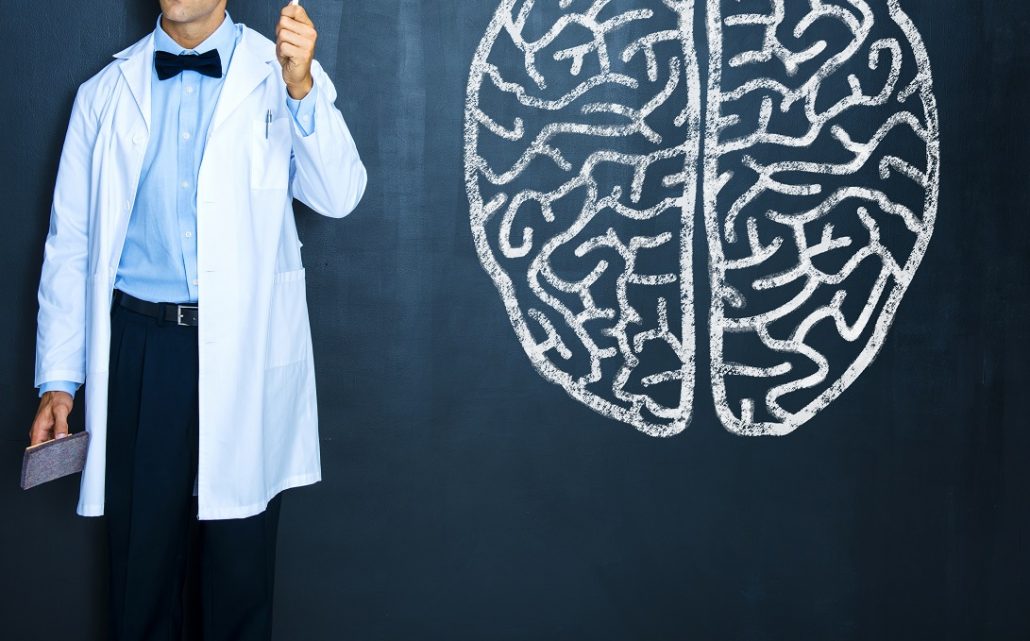
That quirky Science Guy with those theoretically-funky and quantifiably-fresh bow ties from your childhood is back to work making science fun with the help of celebrities and strange experiments. Since 1993, Bill Nye has been trying to teach kids, and the world, about the importance of exploring science. Now, with two seasons of his Netflix series Bill Nye Saves the World already in the bag, our boy Bill has made his way to a hard-hitting topic that has a huge impact on America today- addiction. And according to the science guy himself, one of the biggest myths he is out to debunk is that addiction is a choice. In fact, this kind of stigma may be one of the single greatest hurdles for those who need treatment.
Now we can admit that Bill Nye is not necessarily an authority on mental health or behavioral science. However, the American science communicator began his career as a mechanical engineer for Boeing Corporation, inventing a hydraulic resonance suppressor tube used on 747 airplanes. He eventually left the company to pursue a career in entertainment, and following the success of his show, Nye continued to advocate for science. He became the CEO of the Planetary Society and helped develop sundials for the Mars Exploration Rover missions. So while he may not be an expert himself, it is safe to say he is a smart man who knows how to do his research.
In a recent interview with The Fix, Bill Nye shared some of his thoughts on some of the most crucial questions we have to examine when looking at addiction and its effects. Beyond that, we look at some of the topics covered in the Netflix piece.
Bill Nye Acknowledges the Prevalence of Addiction
One of the first things Nye does is to point out how widespread the issue of addiction truly is. When asking his studio audience if they know someone living with addiction, whether in recovery or not, almost everyone in the room raised their hands. Nye tells The Fix,
“Addiction is a huge problem for our society. It’s very expensive. You have addicts getting addicted to all sorts of things and they become unproductive, they destroy their families, and they, for better or for worse, have very low qualities of life,”
Bill Nye emphasizes that addiction is not limited to a specific economic or social class, sharing a story about the wife of a close friend. This was a person who became addicted to the powerful opioid Oxycontin after breaking her ankle. This family quickly fell apart due to the addiction, despite being successful and affluent.
“It was horrible. It went on for years and years…she got into harder and harder drugs. She was an accessory to murder with a drug dealer, and this was a family that was very well off because of their success and careers. It was really heartbreaking.”
Throughout the segments, Bill Nye continues to expand on the brain’s involvement in addiction. He even bring in people to discuss treatments, and talks about behavioral addictions.
Addressing Choice and Changes in the Brain
Early on in “The Addiction Episode” of Bill Nye Saves the World, the science guy makes a point to distinguish from “really liking chocolate or re-watching episodes of Game of Thrones” and “real conditions that do real harm.”
He immediately points out that our society often believes addiction is an obvious choice, an avoidable weakness, or a moral failure. If you have been awake for the past few decades, you have probably seen this opinion expressed at some point. From lengthy articles like this one (but with better writers) to viral videos on social media featuring some guy yelling at a camera phone because it makes him an expert, people have argued that if people were strong enough they would fix themselves. Bill Nye says,
“I’m here to tell you that just ain’t so.”
Now, while Bill Nye may not be an addiction expert himself, he has surely done his homework over the years by interviewing various experts in the field of addiction medicine and recovery. This isn’t even the first time he’s tried to debunk the myth of addiction being a choice. Years ago he did a similar episode addressing addiction on the show The Eyes of Nye, which featured addictionologist, Dr. Drew. In this past interview, Dr. Drew makes a very strong argument stating:
“The definition of a disease, to me, would be an abnormal physiological process brought on by a relationship between the genetics of the individual and the environment that creates a set of signs and symptoms that progress in a predictable way which we call ‘natural history,’ and by effecting the natural history we can create a predictable response to treatment. That is a disease, and addiction does fit that.”
On Bill Nye Saves the World, he uses his trademark fun and goofy way to explain how dopamine released in the brain’s reward center by particular behaviors over time actually changes the brain, with the help of orange trees and a light-up LED brain. Nye states,
“When and if this happens depends on both the hand you are dealt- your genes- and what’s going on around you- your environment- it’s akin to the old question of nature versus nurture. Except with addiction, it’s both. It’s nature… and nurture!”
Bill Nye explains later on how the human ability to adapt is intimately connected to addiction, adding that while we can get used to just about anything when our brains and bodies adapt to a drug it makes quitting incredibly difficult to accomplish, especially when you factor in withdrawal symptoms.
Putting Addiction into Perspective
But good old Bill doesn’t expect you to just take his word for it, either. Throughout the episode he speaks with various people concerning the truth about addiction and different kinds of treatment for addiction. The conversations include people with various points of reference, including:
-
Maria Bamford, comedian/actress
Bamford sits with Bill to discuss her own experience with what she calls an “addictive process”: an eating disorder. She talks about finding a 12-Step program at 21 years old, and the value she has found in connecting with others.
-
Cara Santa Maria, science communicator and journalist
Cara Santa Maria talks about the importance of having individualized treatment options that go above and beyond the traditional 12 step programs. She also believes that people should also consider connecting addiction to deeper psychological issues, such as trauma.
Dr. Carl Hart advocates that there is a real need for more comprehensive assessments concerning addiction. Dr. Hart believes the vast majority of people who use drugs, including heroin, do not become addicted. Dr. Hart believes also putting too much focus on the drugs and not enough focus on the behaviors makes treatment less effective.
-
Lieutenant Robert Chromik Jr. of a Sherriff’s Office in Ohio
The officer from Ohio states that his precinct has been working to help people get clean instead of arresting them. He says that out of 2,400 “clients” involved in the program, 81% are now living clean. Lt. Chromik also agrees with his fellow panelists that specialized treatment is essential because there is no one-size-fits-all answer.
In the end, the episode is pretty interesting. This writers only critque would be that the ending itself seems almost incomplete. It includes an unrelated, but pretty cool segment about aquaculture with a guest scientist. Still, without a definitive signing-off moment to summarize the concepts Bill covers, the impact of a scientific understanding of addiction almost feels lost. However, between the piece from The Eyes of Nye and this new episode, there is a lot of interesting information that is essential to our society learning to treat addiction, and those who are suffering, better. Overall, one of the most important parts of the conversation is the emphasis on compassion and supporting effective and individualized treatment options. Bill Nye and the many individuals throughout the episode present various perspectives on the issue of addiction. Surely, not all these people agree on everything. Still, the episode works hard to offer a simple explanation of the scientific evidence in the brain and the body as to how addiction really works. Hopefully, more people can appreciate the science behind it.
Thanks Bill. Science still rules.
Another important take away from this episode is that personalized treatment is a unique and life-changing tool to helping get people off of drugs or alcohol. If you or someone you love is struggling, there is professional and innovative help for you today. Please call toll-free now.
CALL NOW 1-888-922-5398
by staff | May 2, 2018 | Addiction, Addiction Stigma, Bullying, Coping Skills, Depression, Family, Mental Health, Mental Health Stigma, Mood Disorders, Parenting, Post-traumatic Stress Disorder, Stigma
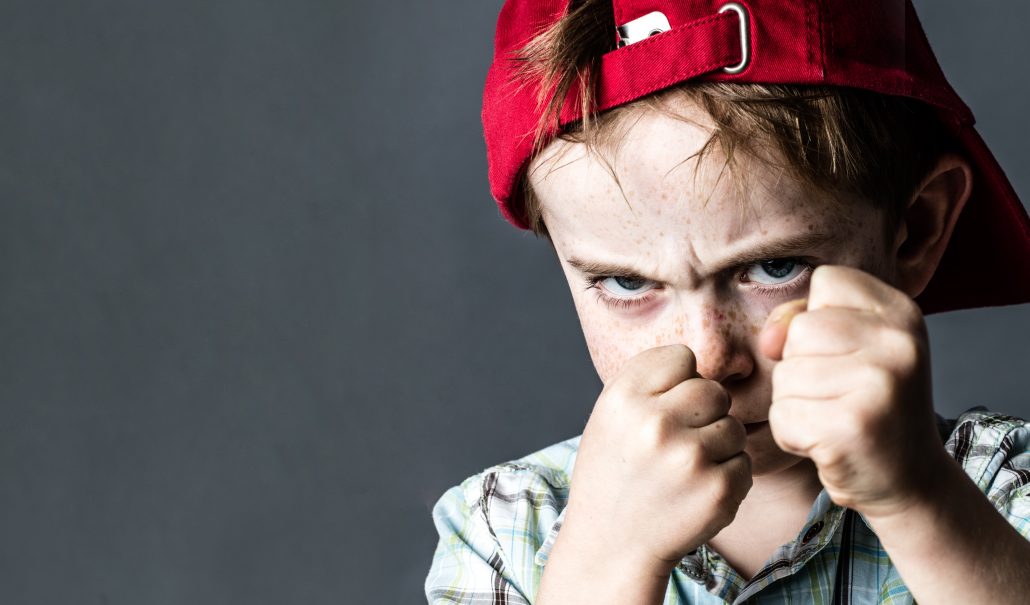
(This content is being used for illustrative purposes only; any person depicted in the content is a model)
Bullying is a concept we are all familiar with. We each experience bullying at some point in life, to one extent or another. Even those who become bullies have often been bullied at some point. Technology and social media have created a whole new breed of cyberbullying, and too many people don’t take bullying very seriously. When you look at bullying statistics, the impact can lead to other real issues, including substance abuse and addiction.
To be a Bully
Firstly, let us look at what it is to be a bully. The title is typically described as the use of superior strength or influence to intimidate, typically to force someone to do what one wants. The site stopbullying.gov defines it as unwanted, aggressive behavior that involves real or perceived power imbalance. This behavior is repeated or has the potential to be repeated over time. It also concludes that both those who are bullied and those who bully often have serious, lasting problems.
Bullying statistics show three categories of behavior:
1. Verbal Bullying
This type of bullying is about the things we say or write. Verbal bullying includes:
- Teasing
- Name-calling
- Inappropriate sexual comments
- Taunting
- Threatening
2. Social Bullying
This involves hurting someone’s reputation or relationships. Social bullying includes:
- Leaving someone out on purpose
- Telling other children not to be friends with someone
- Spreading rumors about someone
- Embarrassing someone in public
3. Physical Bullying
Physical Bullying involves hurting a person’s body or possessions. It includes:
- Hitting/kicking
- Pinching
- Tripping
- Pushing
- Spitting
- Taking or breaking someone’s things
- Making mean or rude hand gestures
Sadly, the prevalence of bullying often convinces people that it is just a rite of passage. A lot of people don’t take the issue seriously enough. Adults often justify the behavior as a sign of immaturity, without realizing the genuine harm that comes from it.
The Impact of Bullying
Being bullied can lead to many other adversities in life, including physical violence and mental health problems.
Because both behaviors are so common, it is difficult to correlate bullying and substance use. When looking at addiction and bullying statistics, according to 2016 Monitoring the Future survey:
- More than 17% of children have tried drugs by 8th grade
- Almost 50% have used illicit drugs by senior year in high school
- Childhood alcohol use rates are even higher
According to the CDC’s 2015 Youth Risk Behavior Survey:
- 20% of American high schoolers have been bullied in school in the past year
- More than 15% have been bullied electronically in the past year
Bullying can erode a child’s self-esteem. It can deplete their confidence, even for those who parents may believe are confident enough to endure a bully. Over time, they learn to question their self-worth. If a bully targets a specific attribute of the individual, they may begin to obsess over it.Some bullying statistics show that those who have been bullied are six times more likely to be diagnosed with mental health issues. It is extremely common for victims of bullying to develop progressive behavioral disorders such as:
Over time, they may turn to alcohol or drugs to ease the pain. Also, the desire to fit in and feel accepted can lead a child using drugs to connect with people. Several studies show the risk factors for psychological health problems, substance abuse, and bullying statistics often overlap.
Similarity in Symptoms
When we look closer at bullying statistics and at the warning signs of substance abuse, we find that the symptoms are extremely similar.
Common Symptoms of Bullying
- Depression
- Anxiety
- Changes in sleep patterns
- Changes in eating habits
- Eating disorders
- Poor performance in school or work
- Loss of interest in activities
- Alcohol or drug use
Common Symptoms of Substance Use Disorder
- Mood swings
- Poor performance in school or work
- Depression
- Anxiety
- Insomnia
- Withdrawal from social activities
- Health problems
Looking at some of the more general warning signs we can see how many are present concerning both issues.
Substances and Bullying Statistics
Ultimately, drugs can become a crutch for numbing the emotional pain of being bullied. While it is harder to predict whether being the victim of bullying will lead to substance abuse, with bullies there is also a very real risk of developing issues with drug use and addiction.
Bullying statistics often show that bullies themselves typically suffer from a variety of emotional and behavioral challenges. Sometimes a child lives in a home with domestic violence, and so they become aggressive with their peers to expel their frustration. Yet, they may still use drugs or alcohol to escape the painful life at home. Even the act of bullying itself is typically an indication of diminished self-worth, and just like with the victims, that lack of self-worth can lead them to use drugs.
Some even believe bullying could be comparable to an addiction itself. Some psychologists compare bullying to other ‘process addictions’ like gambling, overworking or shopping. While we do not recognize bullying as an addiction, many believe the comparison could be helpful to address the issue.
Compassion and Care
Whether or not someone is a victim or bullying, or has been a bully themselves, we all deserve respect and compassion. When it comes to providing care for those who struggle with substance use disorder, it should always be a priority to help people develop healthy coping skills, while gaining self-worth. As people struggle to deal with emotional and behavioral challenges, there should be resources there to help guide them toward personal development. Not just getting off of substances, but also to empower them as an individual.
One issue we have with facing bullying head-on is that people typically think of a “bully” as someone inherently bad. However, life is not so simple. A child who bullies isn’t a bad child, they are just interacting with their world in an unhealthy and aggressive way. They still deserve understanding and support.
We commonly see the same stigma with people struggling with addiction. Too often they are labeled as “bad” people, but the truth is that they are just dealing with things in a self-destructive and unhealthy way. Dealing with substance use disorder and with bullying means meeting it with love and care, not judgment and punishment.
Perhaps if focus more on supporting people, we have a better chance of changing addiction and bullying statistics for the betterment of everyone.
Palm Healthcare Company believes in the importance of compassionate and comprehensive care for those struggling with substance abuse and addiction. Providing a safe medical detox, a personalized recovery program and an innovative approach to holistic health, our mission is to help people transform into the person they want to be. If you or someone you love is struggling, please call toll-free now.
CALL NOW 1-888-922-5398
by Justin Mckibben | Mar 6, 2018 | Drug Dealers, Drug Policy, Drug Trafficking, Law Enforcement, News, Stigma, Violence, War on Drugs

One of the consistent topics in politics now is how the current administration plans to tackle issues concerning drug policy. There’s plenty of recent news, such as the Attorney General announcing a plan for the Justice Department to support states suing Big Pharma opioid makers, while also claiming that marijuana is partly responsible for the opioid crisis. Reports have indicated China is willing to work with the US to fight fentanyl trafficking, but critics are still worried about the massive cuts President Trump proposed for the Office of National Drug Control Policy.
But that isn’t the only proposal made by President Trump that has inspired debates about drug policy.
This past Thursday, while speaking at the White House event on opioid issues, many believe that a few of Trump’s comments endorse the idea of executing people who sell illegal drugs. Shocking as it may seem to some people, the concept isn’t all that new. In fact, we see people all the time in the comment section of many articles on opioids who seem to think this is an acceptable idea.
We have asked the question before if drug dealing should be considered homicide, with mixed responses. However, now it seems we should be asking- is drug dealing punishable by death?
President Trump Admiring the Philippines
If we take a look back, President Trump has supported this strategy before. Just last year the leaked transcript of a phone call with President Rodrigo Duterte of the Philippines quoted Trump praising the nation’s bloody and brutal War on Drugs. In recent years, thousands of extrajudicial killings have taken place in a country fully immersed in a violent vendetta against drugs. The president was quoted saying:
“I just wanted to congratulate you because I am hearing of the unbelievable job on the drug problem. Many countries have the problem, we have a problem, but what a great job you are doing and I just wanted to call and tell you that.”
However, not everyone shares the president’s admiration. An inquiry by the International Criminal Court is actually investigating the killings of the Philippines drug war. Not to mention, others would argue that the brutal crackdowns in the Philippines haven’t exactly worked out either. In December, the head of the country’s drug enforcement agency publicly stated that they have been unable to stop dealing at the street level.
President Trump on Drug Dealers
This isn’t the only reported instance of the president supporting this extreme tactic. Just days before his Thursday remarks there was a story that Trump had privately told a number of people, including leaders in Congress, that he supports executing drug dealers.
So what did President Trump say at the White House Thursday? In general, he thinks sellers of illegal drugs don’t get punished severely enough in the US, stating:
“We have pushers and we have drug dealers that kill hundreds and hundreds of people and most of them don’t even go to jail,”
“If you shoot one person, they give you life, they give you the death penalty. These people [who sell drugs] can kill 2,000, 3,000 people and nothing happens to them.”
Even back in January, President Trump made comments that some think was a precursor to this conversation. In another report, the president suggested he had an idea for a change in drug policy that might be too dramatic for the country.
“No matter what you do, this is something that keeps pouring in. And we’re going to find the answer. There is an answer. I think I actually know the answer, but I’m not sure the country’s ready for it yet. Does anybody know what I mean? I think so.”
There is not yet any indication the president has committed to go this far. And yet, he has repeatedly vowed to be “much tougher on drug dealers and pushers.”
President Trump also said that his administration will be rolling out policy over the next three weeks, promising it will be “very, very strong.” This administration is definitely consistent with its focus on stricter enforcement and tough-on-crime tactics for the drug problem. So is this recent stir surrounding the president’s comments well-founded? Or is the president’s support for dealing with drug dealers with the death penalty just an opinion of his that won’t go into any actual policy plans?
Should Drug Dealers be Executed?
Surely, we will see plenty of arguments in the comments here. There are bound to be some very strong opinions. Some people do believe that drug dealers are the cause of countless deaths and that they should face the harshest punishments possible.
One person might say ‘an eye for an eye… trade one lethal injection for another.’ But we still need to ask ourselves if this is actually effective.
Many would argue that a lot of street-level dealers are addicts themselves, who peddle their own prescription medications or other illegal substances out of desperation. They might still be people suffering from an illness that leads them to do things they might not otherwise do.
You might say- well, then we should only execute people who provide drugs that lead to a death. But there are plenty of cases where this strict of a penalty seems extremely cruel and unusual. And there are already instances where the individual providing drugs to someone who overdosed has been charged with manslaughter. Some were even charged with second-degree murder. For example, there was the case of Joshua Lore. Lore had gotten himself high on heroin and then prepared and administered a dose for his friend, 23-year-old Kody Woods. After Woods died from the overdose, Lore was charged with second-degree murder. The coroner ruled the death accidental. However, the law still allowed for him to be charged as if he had intentionally shot his friend down in the street.
Would anyone argue that maybe he should face the death penalty because maybe his friend paid him for the drugs? What if?
Criminal Charges for Overdoses
In 1986, Boston Celtics draft pick Len Bias’s death was deemed cocaine-relate. The federal government then implemented stiff penalties on drug dealers whose sales can be directly tied to overdoses. This includes a minimum of 20 years, and up to life in prison. But there is the still scrutiny to prove the allegations against dealers. Back in 2014, the U.S. Supreme Court ruled that a drug can’t just have contributed to death. It needs to actually be proven as the cause of death.
So where do we draw the line there? Because in some cases an individual may not die directly due to an overdose, but because the drug causes a reaction in the body with a pre-existing condition or counteracts other drugs it turns deadly. What if someone buys drugs from multiple dealers in one day, then dies? Does each dealer get put to death just in case?
Let us say we are only going to consider the death penalty with king-pins and large-scale traffickers. Kellyanne Conway, who is the head of the White House’s anti-drug effort, supposedly told Axios the proposal from President Trump is more nuanced and would only apply to “high-volume dealers who are killing thousands of people.” Fair enough. But how do we measure that exactly? Will it depend on the drug? Are we going to have someone with marijuana farms being executed next to fentanyl traffickers, even though the substance they sell is considered legal in several states?
It all becomes a much deeper conversation about where the mindset of our world is right now. These days it seems our society has continued to embrace the idea of choosing the lesser evil. And we can argue all day about whether or not people think this is ‘right’… but would it even work?
Lesser Evil
Sadly, even if President Trump were to make the necessary distinctions, there are still going to be people who think all drug dealers should face death. But is trying to fight drugs by making an example out of dealers a practical solution? If people say drug use is still a voluntary act, should selling drugs constitute the death penalty if drugs aren’t forced into the victim’s body? And if we say yes, many also want to know if the president will support holding Big Pharma executives who engaged in corruption and shady marketing to the same standard.
Sure, maybe killing some drug dealers might scare a few others, but it won’t scare them all. If a dealer is taken off the streets, odds are another will take their place. Experts are sometimes split on whether attacking addiction at the supply-side has not been an effective strategy. Some say it makes drugs harder to get and more expensive. However, others say the open market inspires more dealers to take advantage of scarcity with higher prices. Studies even suggest there is no hard evidence that harsher penalties or supply elimination reduces drug use.
The tragic truth is there are already people who think we shouldn’t even be doing so much to save the lives of addicts. They say those who overdose should be left to die.
Is that who we are now? We see the people in our communities in pain and we leave them to die?
President Trump seems to believe a less punitive approach won’t work. So do the people agree? Should we have more compassion or convictions? If we stopped trying to arrest and punish our way out of the opioid crisis, could we be making more lives better?
Should we really be relying on the lesser evil?
The pain of losing a loved one to addiction is undeniable, and the desire for justice is understandable and natural. Even though we see addiction as a disease, we have to know we take our lives into our own hands every time. Sadly, sometimes we don’t make it back. But if you do, take it as an opportunity to make a change. If you or someone you love is struggling with substance abuse or addiction, please call toll-free now.
CALL NOW 1-888-922-5398
by Justin Mckibben | Feb 16, 2018 | Mental Health, Mental Health Stigma, News, Post-traumatic Stress Disorder, Stigma, Violence
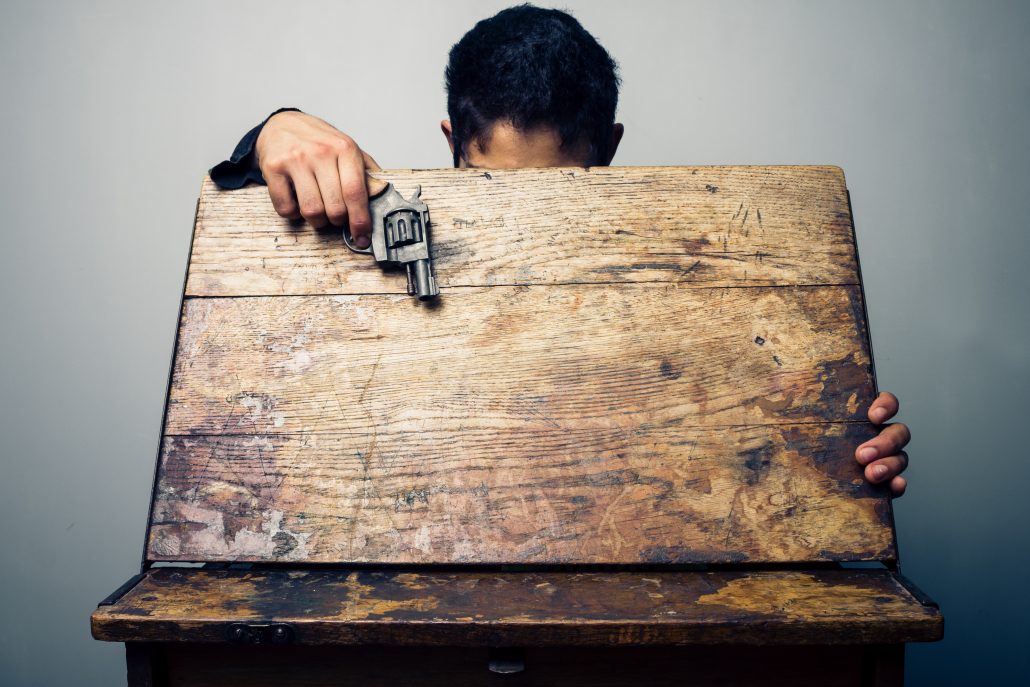
Only days after the horrific South Florida school shooting at Marjory Stoneman Douglas High School, we must take a hard look at the mental health debate, and why mental health should always have been a priority.
It seems like just yesterday I wrote about last year’s tragic mass shooting in Las Vegas and emphasizing how critical it is that mental health support and awareness be a serious and key focus of this conversation. The school where this tragedy took place is a mere 37 miles from where I sit and write this today. I lived within a 20-minute drive of the building for over 3 years. Now, with only a month and 15 days into 2018, we already up to 19 similar acts of terrible violence.
On Wednesday, February 14, Nikolas Cruz entered the high school in Parkland, Florida with an AR-15 rifle and took the lives of 17 people, wounding over a dozen others. This is America’s deadliest school attack in 5 years, perpetrated by a lone 19-year-old gunman with a reputation for disturbing behavior.
Yesterday, President Donald Trump included in his statement about the South Florida school shooting that there were “so many signs” the suspected shooter was “mentally disturbed.” But should mental health be our own focus?
It is extremely difficult to find answers to this complex problem. So what action should we take to change?
The Mental Chaos of Nikolas Cruz
Authorities have confirmed that Cruz was previously expelled from Marjory Stoneman Douglas High School for disciplinary issues. Reports from the school indicate Cruz as a potential threat who demonstrated a fixation on guns. This obsession can be seen on full display through the photos suggested to be pulled from Cruz’s social media accounts.
Reports said that teachers, classmates and even strangers were concerned about Cruz. One teacher apparently reported that administrators sent an email last year saying that Cruz was not allowed to carry a backpack on campus. Cruz’s adoptive father died a few years ago, and his adoptive mother, who was one of the only people the teen was ever close with, died around Thanksgiving. The orphaned 19-year-old had been living at a friend’s house, with some suggesting he was showing signs of depression. Some former friends have even said they cut ties with him after saying he liked to shoot animals. Classmates claim he used to sell knives out of a lunchbox in the school and even threatened students with violence.
Cruz had been suspended more than once before being expelled, for fighting and having bullets found in his backpack. While he had no criminal history prior to this appalling act of violence, he lived a troubling and chaotic life.
What was being done?
Failing to Catch Red Flags
While it is unfair to say there were no actions taken, those actions failed to put a stop to this tragedy. The Washington Post reports that Cruz had been getting treatment at a mental health clinic, but had stopped after less than a year. Some are insisting that not enough was done to try and address the many obvious issues shown in Cruz’s past. Howard Finkelstein, the chief public defender in Broward County, states,
“Every red flag was there and nobody did anything. When we let one of our children fall off grid, when they are screaming for help in every way, do we have the right to kill them when we could have stopped it?”
Even the FBI admits to receiving a warning about this individual and failing to act. With so many indications that Cruz was a threatening, violent and unstable individual it is deeply troubling that not only did he slip through the cracks of any efforts to curb mental health-related issues, but he was able to obtain a variety of weapons. Despite the many red flags, Cruz’s background wouldn’t disqualify him from purchasing the rifle he used in the shooting.
The Mental Health VS Gun Rights Debate
The biggest debate we see after each one of these terrible atrocities is that familiar blame game; Is it a ‘guns’ issue or a ‘mental health’ issue? Without picking a side, I’ll try to acknowledge a lot of the concerns. For example, there is an enormous amount of data showing that the rates of mental health disorders in the last few decades has increased at astonishing rates. Every year the mental health of our nation is dwindling. So is this the answer to the riddle? Some seem to think so. Others- not so much.
The current federal law already denies the sale of firearms to anyone who is considered “adjudicated as a mental defective” by a lawful authority or involuntarily committed to a mental institution. It also allows for states to create stricter restrictions. Some states have taken advantage of this and enacted legal channels for stripping firearms away from gun owners flagged as potential threats. However, some do not think this is enough. Others have even gone as far as directly linking mental health to gun rights.
- In Hawaii, a person diagnosed with a mental disorder may not own a gun without clearance from a doctor.
- California firearm owners can be disqualified from gun possession for five years if involuntarily confined to psychiatric care for 72 hours and deemed by medical professionals to be dangerous to themselves or others.
However, legal experts also warn that it isn’t as simple as identifying people with mental disorders. According to Fredrick Vars, a law professor at the University of Alabama,
“By and large, the people who engage in these horrific events don’t have obvious major psychiatric issues,”
Dr. Rozel, an associate professor of psychiatry at the University of Pittsburgh. He states that these broad restrictions based on a psychiatric diagnosis risk depriving hundreds of thousands of law-abiding people of their gun rights. Rozel goes on to say,
“Fundamentally, that’s the problem with focusing on the mental-health issue.”
According to a study by the U.S. Secret Service and Department of Education in 2004, conducted after the attack at Columbine High School, surveyed “targeted school violence”:
- Only 1/3 of perpetrators had ever received a mental-health evaluation
- Fewer than 20% of that 1/3 had been diagnosed with mental health or behavior disorder before the attack
The President of the American Psychological Association (APA) Jessica Henderson Daniel does not agree with automatically assigning the label of mental illness to school shooters. She and other experts believe such rhetoric oversimplifies the complex problem of mass violence while also stereotyping those who struggle with mental health disorders.
“Framing the conversation about gun violence in the context of mental illness does a disservice both to the victims of violence and unfairly stigmatizes the many others with mental illness.”
A senior policy adviser for the National Alliance on Mental Illness said in an interview that invoking mental illness in the gun-control debate is often more political than helpful to those who actually struggle with mental health issues. Many see it as a means to draw attention away from any discussion on gun control. So is it really that far-fetched to even consider an honest and thorough examination of how we might improve policies surrounding access to guns?
After all, American has more mass shootings than any other developed nation, and not even by a little. Studies indicate that the rate at which public mass shootings occur tripled since 2011.
From 1982 up to 2011, a mass shooting occurred roughly once every 200 days.
Then, between 2011 and 2014 that rate has accelerated to at least one mass shooting every 64 days in the United States.
Realistically, it is fair to question the idea that this is simply a mental health issue. It may be a piece of the problem. Yet there is so much more that needs to be addressed in order to work toward a future without this kind of senseless violence.
What Can Be Done For Mental Health?
The sad thing is, we should never have waited for any acts of violence to make mental health a priority. A wide spectrum of issues, including depression, anxiety, and substance use disorder are all very serious and very damaging conditions. Countless Americans still struggle and don’t even know it, or don’t have access to care.
Many argue that the way lawmakers are changing healthcare is making it harder for people to receive mental health services. So with all that has happened, will mental health truly become the priority everyone says it will be? Thursday President Trump promised to “tackle the difficult issue of mental health” while speaking in regards to this tragic incident. But how will these words be followed by action? The president’s current budget actually includes massive cuts to mental health resources, so will these resources be given new priority?
For trauma survivors, there is a whole other element to providing mental health support resources. Horrific incidents like this recent shooting create shockwaves throughout the community and impact the mental health of innumerable others. Students, families and friends, teachers and other officials like law enforcement are all exposed to a new level of unimaginable pain and suffering. We must also make their mental health a priority. But we need to stop waiting until something unspeakable happens before we worry about our nation’s mental health.
Our hearts break for all of our neighbors here in South Florida who are suffering. No matter what we do, be it changing our mental health care or any other policies concerning guns, we MUST DO BETTER!
If you or someone you love is struggling with trauma, depression, or any mental health disorder please seek help. If you struggle with substance use disorder, drugs or alcohol is not the answer. There is real help out there. Please call toll-free now.
CALL NOW 1-888-922-5398
by Justin Mckibben | Jan 9, 2018 | Addiction Stigma, Drug Abuse, Opioids, Prescription Drugs, Professionals, Stigma

(This content is being used for illustrative purposes only; any person depicted in the content is a model)
The opioid crisis has affected every community in America. Opioids affect rural working class people, those in the inner city and suburbs, or even the wealthy and well-to-do professionals. While drug abuse in business has been highlighted in blockbuster films like the Wolf of Wall Street, the current reality is not far from it. According to addiction experts, substance use disorder is making a sobering impact on the financial industry.
This comes from not just an upscale partying lifestyle, but also from drugs used to manage performance and stress, along with physical pain. According to addiction experts, the financial industry itself is actively turning a blind eye to the issues concerning opioid abuse on Wall Street because money is still the priority, and stigma still gets in the way.
Opioids on Wall Street: White-Collar Confessions
As it stands there is no comprehensive research that takes a detailed look at opioid abuse in Wall Street among finance professionals. So we can’t exactly show the numbers to prove it’s prevalence. However, what we see consistently is a dramatic increase in addiction and overdose rates all over the nation in recent years.
Luckily, professionals from this demographic are beginning to speak out in hopes of progressive change.
One such individual is Trey Laird, a former Wall Street trader, who recently spoke to CNBC about his six-year opioid addiction. During the conversation Laird reiterates the critical understanding that substance use disorder can reach anyone, saying:
“Addiction pervades every single socioeconomic demographic that there is. Every industry, every race, men, women. It doesn’t care who you are,”
After getting clean himself, Laird went on to open a sober living community and says he hopes to specifically serve the Wall Street and white collar demographic.
According to Laird, there has been more talk about opioid addiction among people in higher socioeconomic brackets, but there is still much work that needs to be done. He acknowledges that increasing awareness is doing a great deal, but that the problem is also at an increase. Wall Street may finally be talking about it, but how many professionals will get the help they truly need?
Opioids on Wall Street: Stocks and Stigma
One of the biggest obstacles facing white-collar workers like those in Wall Street is the engrained stigma still attached to addiction. Even with all the shifts in our culture toward a better understanding of substance use and the compassion for those struggling, professionals still have this seemingly unbearable hurdle in front of them.
Truthfully, stigma is something that prevents most people from getting help. Professionals will often be too afraid of losing their jobs to admit they need help. Many in the world of Wall Street and finance may have no information on how to seek out treatment while adhering to their professional boards’ guidelines and business practices.
With white-collar workers, this may be an especially difficult thing because the idea of addiction is so often attached to stereotypes of the unemployable, the homeless, the unreliable and unstable that their high-earning careers might minimize the impact drugs have on their lives. Wall Street stockbrokers and traders might not see themselves as having a problem as long as they can function, which brings in the idea of the “functioning addict.”
Opioids on Wall Street: Function Addiction is Still Addiction
Many white-collar workers who struggle with drugs or alcohol may consider themselves a “functioning addict”, meaning they are less likely see their actions as a problem because they are able to maintain their professional or even personal lives. To make matters worse, frequently the people around someone who is professionally successful will not believe the addiction is real. They may admit that you’ve been careless or destructive in some respects, but will ultimately minimize it due to your financial stability.
As long as you’re making money and paying the bills how could you possibly be “that bad?”
Well, because “functioning addiction” is still an addiction.
Addiction isn’t about whether or not you are able to hold down a steady income. It does not depend on whether or not other people recognize that you have a problem or your competence with your profession. While addiction can and will have an impact on these things, it isn’t always as black and white as most people like to pretend.
Notice how earlier we said you may “maintain” other areas of your life? Well, we mean to say that you can get by for a while, but eventually, the effects of addiction will catch up with you. It could be in the form of serious health consequences or other devastating circumstances. It could take days, months or even years, but it will leave a mark.
Sadly, “functioning addicts” are also far less likely to get the help they desperately need.
Opioids on Wall Street: It Could Be You
While you might be able to keep your addiction secret, in the beginning, things will eventually get worse. Eventually, your addiction will become unmanageable.
If you think you might fit the “functioning addiction” criteria, look at the following questions and answer them honestly.
- Do you often think about using drugs or drinking?
- Do you find it hard to stop after you start drinking or using?
- Are you scheduling your time around drinking or using drugs?
- Have you tried to stop before, but found that you were unable to?
- Do you drink or use drugs first thing in the morning?
- Are you drinking or using drugs at work?
- Do you hide your drug use or drinking?
- Have you done something risky, like driven drunk?
- Do you worry about your drug use or drinking?
If you find you are answering “yes” more than “no” then you should seriously consider speaking with a medical or addiction professional about your drug use or drinking.
The opioid crisis is nothing to be ignored. Despite all that we think we have learned about addiction too many professionals don’t get the help they need. No one is exempt from the destruction of addiction. Opioids don’t care what street you work on, Wall Street or not, they can ruin your life all the same. If you or someone you love is struggling, please call toll-free now. We want to help.
CALL NOW 1-888-922-5398
by Justin Mckibben | Jan 3, 2018 | Addiction, Addiction Treatment, Donald Trump, Drug Abuse, Drug Policy, Dual Diagnosis, Family, Fentanyl, Inpatient Treatment, Law Enforcement, Mental Health, News, PAARI, Prescription Drugs, Professionals, Recovery, Sobriety, Stigma, Synthetic Drugs
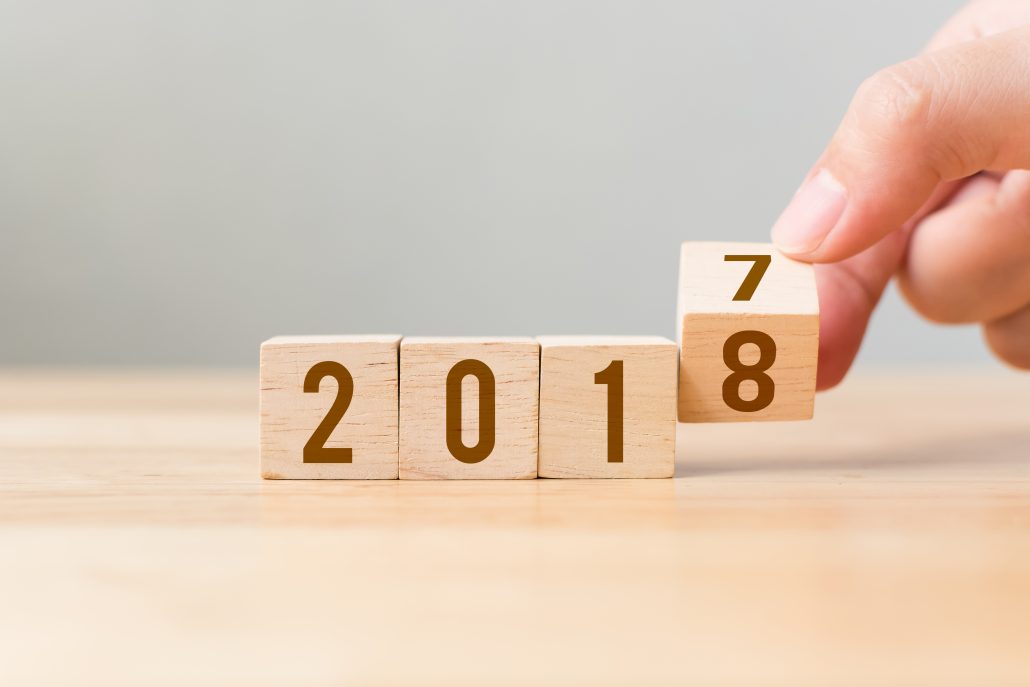
With the beginning of the new year, Palm Healthcare Company is looking forward to helping spread more exciting stories of experience, strength, and hope while also sharing important news stories and exciting new developments that relate to the world of addiction recovery and substance use disorder treatment. As we commit ourselves to another year of fighting alongside thousands of people working toward a better future, we would also like to take some time looking back on all the big moments in 2017 that we shared with our Palm Healthcare Company Blog.
-
President Trump Declares Public Health Emergency: What’s the Plan?
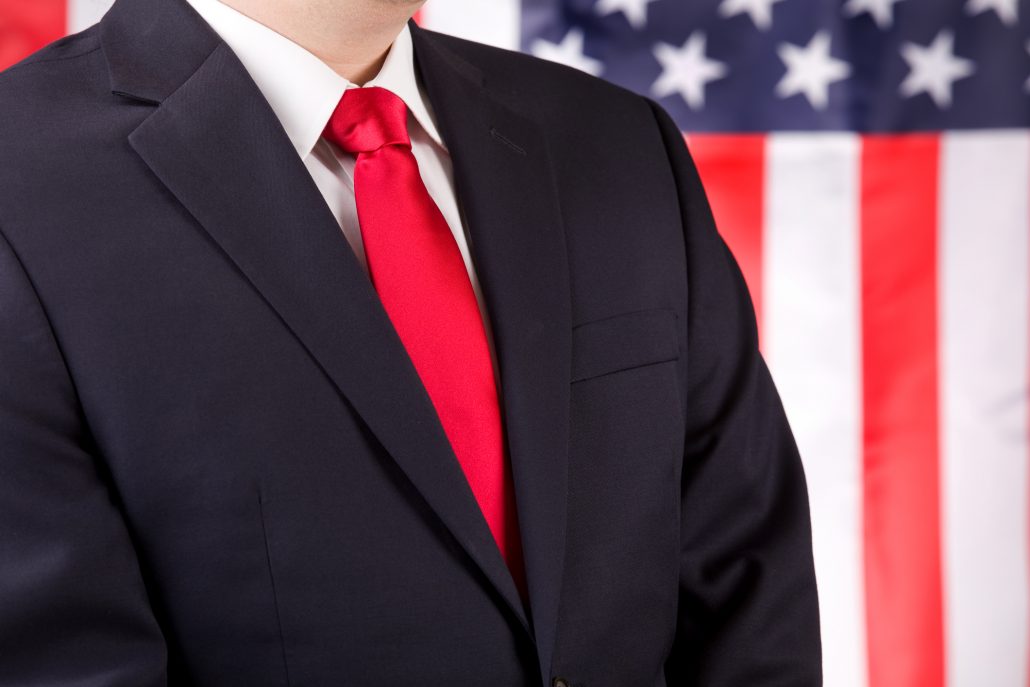
October of 2017, President Donald Trump made an announcement declaring the opioid crisis in America as a Public Health Emergency. This highly anticipated declaration was delivered in a way slightly different than many had expected, noting the technical differences between a Public Health Emergency and a National Emergency.
Many advocates were concerned that this announcement did not provide a concrete foundation for the necessary federal funding and did not initiate much-needed action, but others we assured that this means the Trump administration was taking this issue very seriously. In this article, we took a look at what this announcement did actually accomplish, and what it failed to deliver on.
-
Racketeering for Fentanyl: Opioid Maker Insys Founder Arrested for Bribes
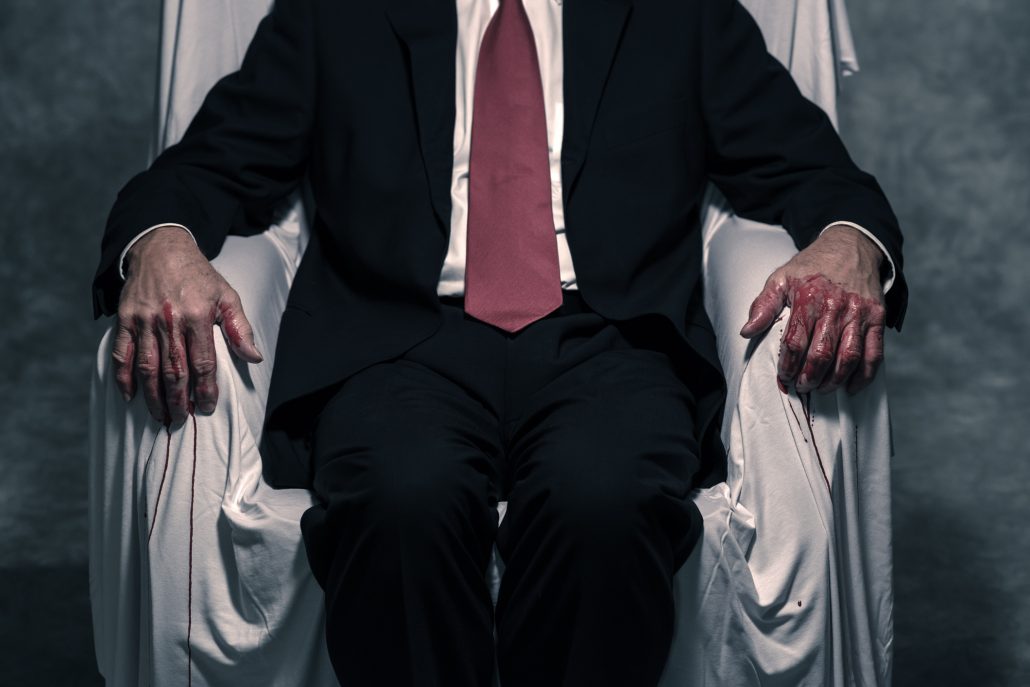
A huge development to another story came in late 2017 when John Kapoor, former CEO of Insys Therapeutics and founding father of one of the most prominent opioid manufacturers in the country, was arrested and charged with conspiring to push the signature drug of Insys Therapeutics, a Fentanyl spray called Subsys, for unacceptable uses through bribes and kickbacks.
The Palm Healthcare Company blog notes how back in 2016 the Justice Department reported to be charging 6 former executives and sales-managers of Insys Therapeutics for conspiring to defraud health insurers.
When looking at the details in this story, it has intensified the conversation about Big Pharma involvement in the epidemic
-
Can Kellyanne Conway Really Compete with the Opioid Crisis?

Not too long after President Trump’s declaration of a Public Health Emergency pertaining to the opioid crisis, Kellyanne Conway was announced as leading the charge on the White House’s efforts for addressing the opioid epidemic.
This Palm Healthcare Company blog saw a lot of comments!
While some find that having a high-profile figure at the head of the efforts gives validity to the White House’s commitment to solving the opioid issue in America, many others are speaking out in frustration. Those in opposition to this appointment say that while she may be useful as a counselor or pollster, she has no experience of expertise when it comes to drug abuse, addiction or substance use disorder treatment.
Thus far the one thing both Kellyanne and the President seem adamant about is a media campaign, but advocates are still afraid this is more “Just Say No” and not enough support for effective resources.
-
After Las Vegas Shooting: PTSD and Mental Health Must be Priority

In early October of 2016, the nation was shaken to its core when Las Vegas had one of the deadliest shootings in modern American history. This horrific tragedy flooded newsrooms and live viral footage with the country watching in shock as a gunman killed 58 people and injured 546 more at an outdoor music festival.
In the aftermath of this terrible and heartbreaking incident, our Palm Healthcare Company blog took a look at how such traumatic experiences impact people, and about the importance of those who struggle with Post-traumatic Stress Disorder (PTSD) getting proper diagnosis and care.
At a time when so many people are self-medicating with dangerous or even deadly narcotics, it is important to care for those most vulnerable, especially after such an earth-shattering experience.
-
Police Helping Addicts into Treatment is a Growing Trend Saving Lives
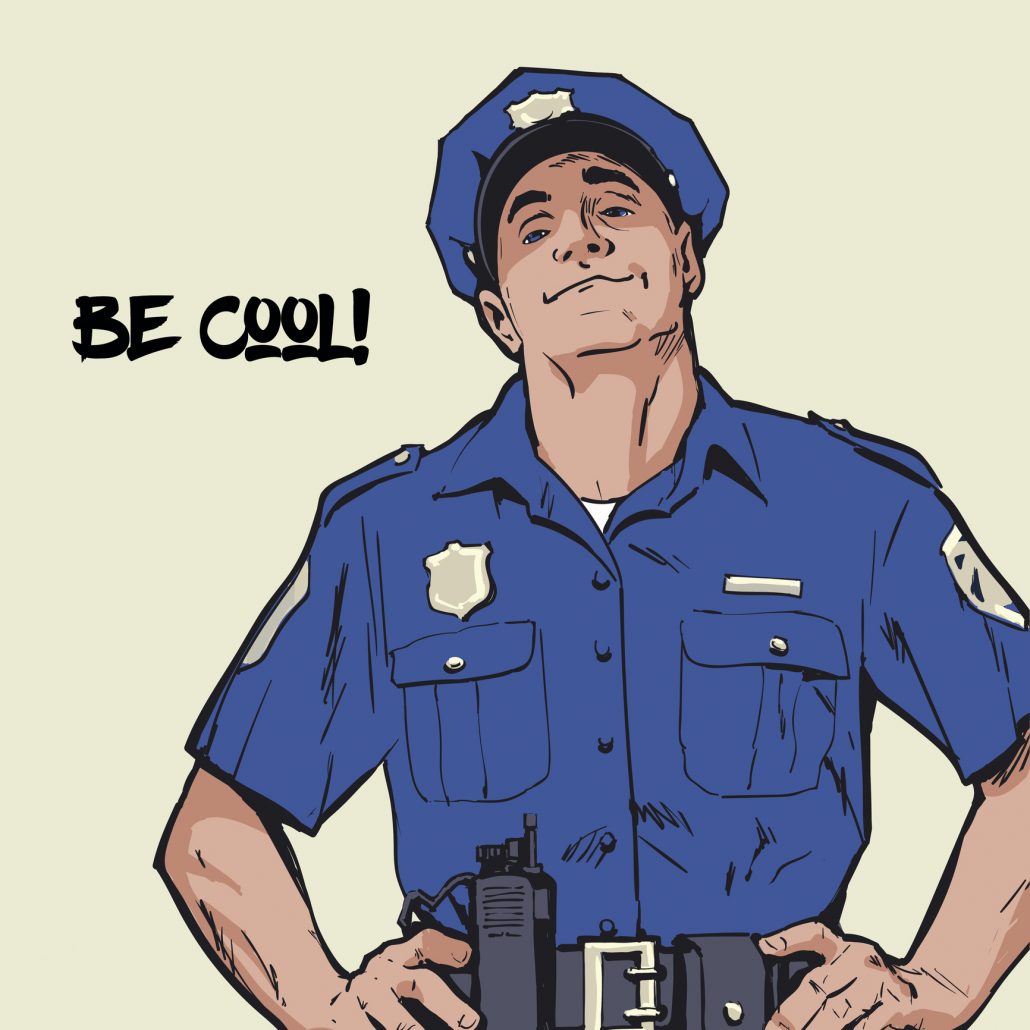
In August of 2017, we took a look back at several programs that had come to light all over the country based on Police Departments working with their communities to offer drug users the chance to get help with addiction treatment instead of being arrested and charged.
The pioneering program came from Gloucester Police Department in Massachusetts back in 2015. This program allowed users to ask police for help, and told addicts they could submit drugs to local law enforcement without fear of being arrested if they were willing to seek treatment. A 2016 study showed that this program was experiencing some impressive success.
Police departments in a number of other states were inspired by this and took up similar programs as a way to help their communities fight the addiction outbreak.
The Palm Healthcare Company blog took a close look at a handful of these programs to celebrate their compassion and success.
-
Sterilized for Cash: This Woman Pays Drug Addicts to Not Have Kids

Pregnant lady’s stomach and her hand holding dollar over black background
When we posted this Palm Healthcare Company blog we saw a great deal of debate in the comments on our Facebook. For over 20 years, Barbara Harris has driven across the country using cash to ask addicted women to give up their fertility. To date, the organization has paid over 7,000 people.
The controversy around such a powerful story had some people showing a great deal of support for someone giving addicted women an incentive to not get pregnant, while other people were appalled and angered that someone would entice desperate women who are not in the right mindset to make such dramatic and life-altering decisions with their bodies.
-
What Chester Bennington Taught Us about Addiction and Depression
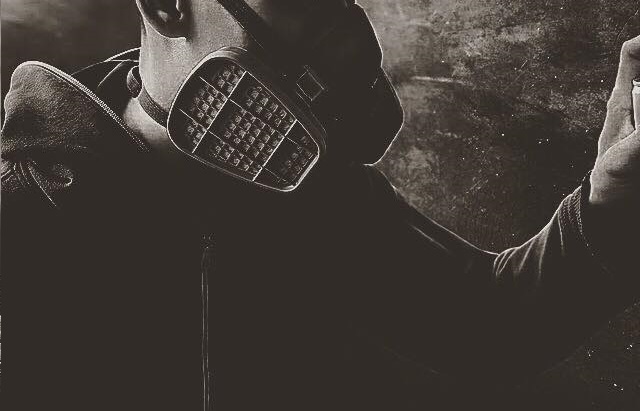
(This content is being used for illustrative purposes only; any person depicted in the content is a model)
In July of 2017, the world lost a great artist and inspirational musician with the death of Chester Bennington, the lead singer of the band Linkin Park.
Initial reports were that Bennington had died from suicide by hanging, with later reports indicating that Chester had been drinking at the time of his death. The vocalist had been open about his struggles with depression and drug addiction over the years, and in this article, we took a look at just how much Chester Bennington could teach us about the devastation of depression and addiction.
-
Dear Media, Thank You for Bad Press

South Florida has been under a great deal of scrutiny recently, specifically concerning the issues facing the recovery community such as unethical and illegitimate sober home operators in the area. In June, there was a Megyn Kelly NBC News Investigation which focused in on Delray Beach, Florida and some of the big problems concerning unscrupulous activities from corrupt individuals exploiting drug addicts in need of help.
We took this time to look over some of the bigger stories concerning the illicit activities in South Florida with the recovery industry while showing support and gratitude for all those working together to try and put an end to operators who are taking advantage of people in need of help.
-
Palm Healthcare Measures Up to Addiction Treatment Outline for EAP
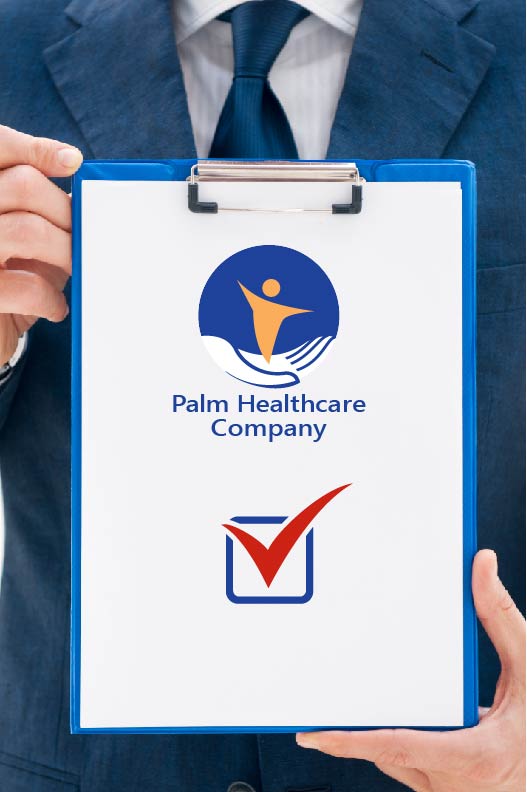
In September of 2017, we took a very close look at an article written by the Journal of Employee Assistance that was designed to help Employee Assistance Programs (EAPs) find the right kind of addiction treatment programs to recommend to their clients.
The outline given for EAPs to find effective and reliable addiction treatment options gives a list of things to look for. The Palm Healthcare Company blog was happy to show off just how all of our facilities measure up to these crucial standards.
Keep an Eye Out for More
Palm Healthcare Company continues to try and share every treatment development, news story or exciting innovation on our blog to not only help more people learn and raise awareness but to offer some perspective and maybe ask some new questions.
Whether it is sports, celebrities, news or politics we are committed to talking about important stories that pertain to drug policy in America, substance use disorder, mental health, and personal wellness. We will continue to touch on the top stories of 2018 to spread the word and hopefully inspire more people to get involved in these crucial conversations.
2017 was an intense, innovative and inspiring year. Here is to hope for 2018.
Holistic addiction treatment means incorporating every aspect of life for each individual with personalized opportunities for lasting recovery. So every bit of information can help anyone make a more comprehensive decision about what kind of recovery plan they want. If you or someone you love is struggling, please call toll-free now.
CALL NOW 1-888-922-5398
















